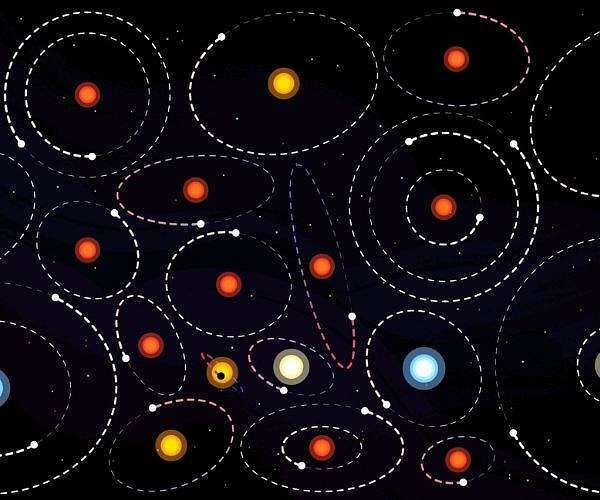4.08.2024

NASA is dedicated to exploring the potential for life beyond Earth, although no credible evidence of extraterrestrial life has been found yet. This exploration addresses fundamental questions, including whether humanity is alone in the universe.
Researchers investigating the possibility of extraterrestrial life consider various forms of life, from microbial to complex civilizations. Detecting advanced civilizations, which might show technosignatures, is a key focus. These studies guide the development of new telescopes and missions to target the most promising search areas.
A recent study published on May 24 in the Astrophysical Journal suggests that advanced extraterrestrial civilizations may be difficult to detect because their energy needs might be modest. If these civilizations do not require significant power, they may not construct large energy-harvesting structures detectable by our telescopes. On Earth, such structures might resemble vast solar panel arrays or orbiting megastructures capturing stellar energy.
"We found that even if our current population of about 8 billion stabilizes at 30 billion with a high standard of living, and we only use solar energy for power, we still use way less energy than that provided by all the sunlight illuminating our planet," said Ravi Kopparapu of NASA's Goddard Space Flight Center in Greenbelt, Maryland, lead author of the paper.
This research relates to the Fermi paradox, which questions why, given the age and vastness of our galaxy and the feasibility of interstellar travel, we haven't seen signs of alien civilizations.
"The implication is that civilizations may not feel compelled to expand all over the galaxy because they may achieve sustainable population and energy-usage levels even if they choose a very high standard of living," said Kopparapu. "They may expand within their own stellar system, or even within nearby star systems, but a galaxy-spanning civilization may not exist."
Moreover, our current technology might not be capable of predicting the actions of more advanced civilizations.
"Large-scale stellar-energy harvesting structures may especially be obsolete when considering technological advances," adds Vincent Kofman, a co-author of the paper at NASA Goddard and American University, Washington, D.C. "Surely a society that can place enormous structures in space would be able to access nuclear fusion or other space-efficient methods of generating power."
The researchers employed computer models and NASA satellite data to simulate an Earth-like planet with various levels of silicon solar panel coverage. They then used a model of an advanced telescope, such as the proposed NASA Habitable Worlds Observatory, to determine if it could detect these panels on a planet approximately 30 light-years away. They concluded that detecting technosignatures from solar panels covering about 23% of the land area on an Earth-like exoplanet would require hundreds of hours of observation. However, the energy needs for 30 billion humans at a high standard of living would only need about 8.9% solar-panel coverage.
Extraterrestrial civilizations with advanced technology might be identifiable through technosignatures - observational evidence of extraterrestrial technology. Scientists have traditionally used radio telescopes to search for alien radio transmissions. More recently, they have proposed using telescopes like the Habitable Worlds Observatory to search for other technosignatures, such as chemical markers in exoplanet atmospheres or specific light reflections indicating large silicon solar arrays.
The study presumes extraterrestrials would construct solar panels from silicon due to its abundance and efficiency in converting sunlight to electricity. Silicon is also cost-effective for mining and manufacturing into solar cells.
The study also assumes that an extraterrestrial civilization would rely solely on solar energy. If they use other energy sources, such as nuclear fusion, the silicon technosignature would diminish, making detection even harder. Additionally, the study assumes the civilization's population would stabilize. If this does not occur, they might expand further into space. It's also possible that advanced civilizations could use unknown technologies requiring vast power amounts.
Quelle: SD
